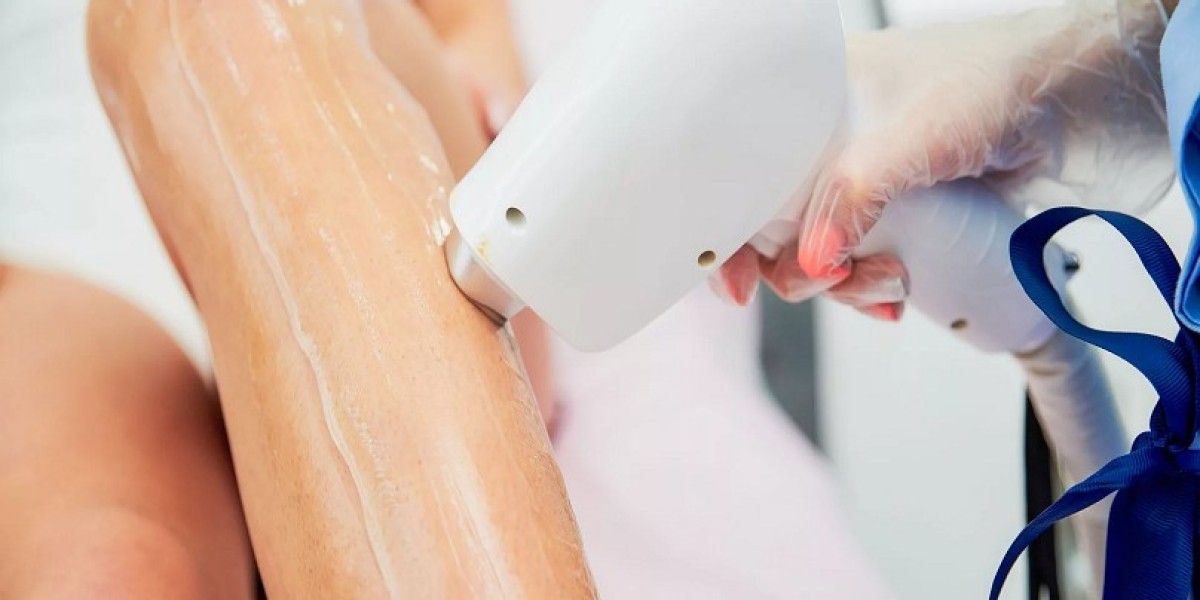Facial hair can be a source of concern for many, especially when it becomes difficult to manage using traditional hair removal methods like waxing, threading, or shaving. While these options offer temporary relief, they often come with the risk of irritation, ingrown hairs, or an increase in coarseness over time. Laser hair removal has emerged as a highly effective and long-lasting solution for facial hair reduction, offering a smoother, more permanent alternative.
In this article, we will delve into everything you need to know about Best Laser Hair Removal in Dubai for facial hair, including how it works, the benefits and risks, the process of treatment, and tips for achieving the best results.
Understanding Laser Hair Removal for Facial Hair
Laser hair removal targets the hair follicles beneath the skin's surface, using concentrated beams of light to destroy the follicle and inhibit future hair growth. The procedure is based on the principle of selective photothermolysis, where the laser energy is absorbed by the pigment (melanin) in the hair, which heats and damages the follicle without affecting the surrounding skin.
Facial hair removal, however, presents unique challenges compared to other body areas. The skin on the face is more sensitive and the hair is often finer, making precision a key factor in achieving safe and effective results. Additionally, hormonal factors, especially in women, can influence hair growth patterns, meaning multiple treatments are often required for optimal outcomes.
Who Is a Good Candidate for Facial Laser Hair Removal?
Laser hair removal can work for most skin types, but the best candidates are typically those with light skin and dark hair. This is because the laser targets melanin, and the contrast between light skin and dark hair allows for more precise targeting. However, modern advancements in laser technology have made it possible to treat darker skin tones and lighter hair, although treatment plans for these individuals may need to be customized.
For facial hair, candidates can include:
- Women with hormonal imbalances (such as polycystic ovary syndrome or PCOS) that lead to excessive facial hair growth.
- Men seeking to reduce beard growth to avoid frequent shaving or issues like razor bumps and ingrown hairs.
- Individuals with sensitive skin who experience irritation from traditional hair removal methods.
Common Areas of Treatment
Laser hair removal for facial hair is commonly performed on various areas, including:
- Upper lip
- Chin
- Cheeks
- Jawline
- Sideburns
- Neck
Men often seek laser treatments for beard shaping or to reduce growth in the neck area, while women may target areas like the chin or upper lip where hormonal hair growth is common.
The Laser Hair Removal Process for Facial Hair
1. Consultation and Patch Test
Before starting treatment, it's essential to have a consultation with a qualified technician or dermatologist. They will evaluate your skin type, hair color, and medical history to determine if you're a good candidate for laser hair removal. A patch test is often conducted to assess how your skin reacts to the laser, especially since the face is a sensitive area.
- Why a patch test is important: It helps ensure that the laser settings are safe for your skin and can prevent potential adverse reactions during the full treatment.
2. Treatment Sessions
Laser hair removal requires multiple sessions because hair grows in different cycles. At any given time, only a portion of the hair is in the "active" growth phase (anagen), which is when the laser can effectively target the follicle. Depending on your hair type and the area being treated, you may need anywhere from 6 to 10 sessions spaced 4 to 6 weeks apart for optimal results.
- Session duration: Each session is relatively quick, with treatments for small areas like the upper lip taking only a few minutes, while larger areas like the neck may take 15 to 30 minutes.
3. Pain and Comfort
Facial skin is more sensitive than other body parts, which can make the procedure slightly uncomfortable. However, most laser devices come equipped with cooling mechanisms to soothe the skin during treatment. A numbing cream may also be applied before the procedure to minimize discomfort.
- Pain level: Most patients describe the sensation as similar to a rubber band snapping against the skin, though this varies based on individual pain tolerance.
4. Post-Treatment Care
After each session, you may experience some redness, swelling, or mild irritation, similar to a mild sunburn. These side effects typically subside within a few hours to a day. It’s important to follow your technician’s post-treatment care instructions carefully to ensure a smooth recovery and avoid complications.
Pre-Treatment and Post-Treatment Care Tips
Laser hair removal can be a highly effective solution for facial hair removal, but following a proper pre- and post-treatment care routine is essential to avoid complications and achieve the best results.
Pre-Treatment Care
- Avoid sun exposure: Laser treatments are more effective on untanned skin, and sun exposure can increase the risk of burns and pigmentation. Apply sunscreen and avoid direct sunlight for at least two weeks before your appointment.
- Avoid hair removal methods that remove the root: Stay away from waxing, plucking, or epilating in the weeks leading up to your treatment. Shaving is the only hair removal method allowed, as it preserves the hair follicle for the laser to target.
- Shave the treatment area: You will be asked to shave the area being treated 24 hours before your session to minimize the risk of burns and ensure the laser can focus on the hair follicle.
Post-Treatment Care
- Use a cold compress: To reduce redness and swelling, apply a cold compress to the treated area. Aloe vera gel is also helpful in soothing the skin.
- Avoid heat: Stay away from hot showers, saunas, and intense exercise for 24 to 48 hours after treatment, as heat can aggravate the skin.
- Moisturize: Use a gentle, fragrance-free moisturizer to keep the skin hydrated.
- Apply sunscreen: Protect the treated area from the sun by applying a broad-spectrum sunscreen with an SPF of 30 or higher. Sun exposure can cause hyperpigmentation and slow down the healing process.
Benefits of Laser Hair Removal for Facial Hair
Laser hair removal offers several advantages over traditional hair removal methods, particularly for those who struggle with recurring facial hair:
1. Long-Lasting Results
Unlike shaving or waxing, laser hair removal targets the hair follicle at its root, providing longer-lasting results. Many patients experience a significant reduction in hair growth after just a few sessions, and over time, hair may stop growing altogether.
2. Precision
Laser hair removal allows for precise targeting of specific areas of the face, ensuring that only unwanted hair is removed while preserving the surrounding skin. This makes it an ideal solution for shaping facial hair, such as creating a clean beard line for men or removing hair from delicate areas like the upper lip.
3. Reduced Ingrown Hairs
Laser hair removal can significantly reduce the occurrence of ingrown hairs, which are common with methods like shaving and waxing. By destroying the hair follicle, laser treatments prevent hair from growing back into the skin, minimizing irritation and bumps.
4. Time and Cost Efficiency
While the upfront cost of laser hair removal may be higher than traditional methods, it offers long-term savings by reducing the need for frequent treatments like waxing or threading. Over time, many patients find it to be more cost-effective.
5. Improved Skin Texture
For individuals who suffer from skin irritation due to regular shaving or waxing, laser hair removal can lead to smoother, clearer skin. By eliminating the need for frequent hair removal, the skin has time to heal and regenerate, leading to improved texture and tone.
Risks and Side Effects
While laser hair removal is generally safe, especially when performed by a trained professional, there are some risks and side effects to consider, particularly when treating facial hair:
- Temporary irritation: Redness, swelling, and discomfort are common side effects but usually subside within a day or two.
- Pigment changes: People with darker skin tones may experience temporary lightening (hypopigmentation) or darkening (hyperpigmentation) of the skin in treated areas. This is why choosing the right laser type and technician is crucial.
- Scarring or burns: Although rare, improper use of the laser can lead to scarring or burns, especially on sensitive facial skin. This risk can be minimized by selecting an experienced provider.
Conclusion: Is Laser Hair Removal Right for Your Facial Hair?
Laser hair removal for facial hair offers a safe, effective, and long-lasting solution for those looking to reduce unwanted hair on the face. With the right laser type, treatment plan, and care, you can achieve smoother, hair-free skin with minimal discomfort. The key to success lies in choosing an experienced technician, following pre- and post-treatment care guidelines, and committing to multiple sessions to achieve the best results.








